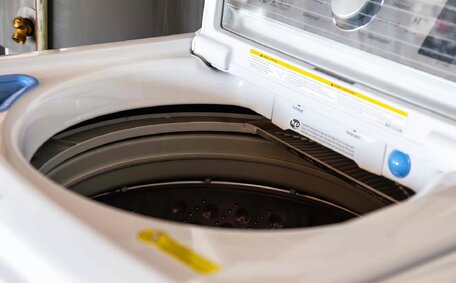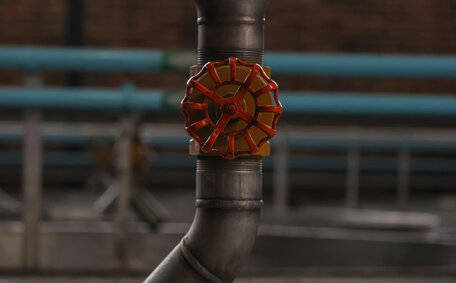Introduction to Epoxy Resin Used in Pipe Relining
Epoxy resin has become essential for pipe relining due to its robustness. Its durability, adhesion properties, and cost-effectiveness compared to full pipe replacement make it a prime choice for restoring worn or damaged pipes without major disruption. In Pennant Hills, Sydney, epoxy resin linings are a top choice for rehabilitating aging pipe infrastructure, offering long-term effectiveness in both residential and commercial settings.
In this article, we’ll be exploring the typical lifespan of epoxy resin used in pipe relining applications. This article covers factors that affect its longevity, such as proper installation, storage, and maintenance.
We’ll also outline the key benefits of epoxy relining, and why it has become the preferred rehabilitation method for extending the functional life of pipe systems.
Understanding the lifespan of epoxy, which significantly exceeds that of traditional replacements, allows our team to provide informed advice to clients. Whether you’re weighing up relining versus new piping, or want to maximise the return on investment from past lining projects, the forthcoming information outlines realistic durability expectations.
Expected Lifespan and Durability
Epoxy’s inert nature after curing shields it from corrosion, chemicals, and abrasion, contributing to its remarkable durability.
Epoxy’s adhesive quality enables it to form a strong bond with the interior walls of host pipes. This stability prevents internal wear or breakdown over decades of standard water flow and pressure in water pipes. Epoxy’s natural resistance to cracking or peeling also preserves the water supply network’s integrity despite subtle ground shifts and vibrations.
Naturally, reaching lifespans of 60 to 100 years hinges on correct installation and curing procedures. But when lining projects meet quality standards, and environmental conditions remain relatively stable, epoxy offers exceptional longevity that far exceeds traditional pipe replacements.
Proper Storage to Maximize Shelf Life
Even the most durable epoxy resins used in pipe relining can degrade over time if not stored correctly. To extend shelf life, it is crucial to manage temperature, light, and moisture exposure meticulously.
WEST SYSTEM epoxy resins, known for their quality, offer extended shelf lives when stored correctly. Their 105 Resin and 206 Slow Hardener, essential to the curing process, have stayed functional for over a decade when stored sealed at room temperature. This underscores the long-term usability of epoxy with simple storage precautions.
It’s important to keep storage areas at a stable temperature of 15-32 degrees Celsius. Excess heat and cold extremes can accelerate destabilisation of resins and reduce viable work times after mixing. Similarly, storage sites should be free of moisture and water contact, which can cause containers to rust while degrading the epoxy itself.
Avoid exposing epoxy resins to direct sunlight and UV light, which can prematurely polymerize the material, making it unusable. Ensuring the product can remain sealed in opaque drums or pails prevents light exposure issues.
Before using epoxy that’s been stored for 6-12 months, check for crystallisation or changes in consistency. Small-scale pot life tests will demonstrate whether working times are satisfactory for secure application. This allows older stock to be revalidated rather than discarded prematurely.
Overall, temperature control, darkness, and dryness are key to maximising an epoxy resin’s shelf life for pipe relining projects. Adequate storage can enable an epoxy resin shelf life that surpasses 10 years.
Impact of Contamination on Epoxy Resin
While epoxy resin solutions like Nuflow’s linings offer exceptional longevity when correctly installed, their performance and shelf life relies on pristine storage conditions. Storage contamination by foreign materials or moisture can drastically hasten the degradation of epoxy resin.
Common contaminants include dust and dirts, metal fragments from mixing tools, humidity, and excess moisture. These can destabilise the epoxy formulation through unintended chemical reactions or polymerisation. Dust particles may also later dislodge after lining installation, undermining the resin’s critical adhesion and stability inside host pipes.
Preventing contamination involves keeping storage containers tightly sealed with appropriate lids. Separating supplies into different containers can minimize material exposure and contamination risks.
Before decanting or pouring resins, containers should be inspected for moisture and pre-cleaned if dusty. Where humidity may cause condensation, Incorporating desiccant packs helps sustain stable air conditions in storage spaces.
Workers must avoid skin contact with epoxy resins to prevent contamination from body oils and sweat. Similarly, Keep food, cigarettes, and items that shed particles away from epoxy resin storage areas. Employing these precautions maintains epoxy purity, thereby enhancing its practical shelf life for extensive projects.
Comparing Epoxy Resin to Alternate Pipe Solutions
When ageing or damaged pipes require restoration, epoxy resin linings provide a compelling value proposition compared to full pipe replacements. Installation is faster, significantly cheaper, and causes minimal disruption to operations.
The epoxy lining method is approximately 50% more cost-effective than swapping out entire pipe sections. This saves tens of thousands of dollars across typical commercial and residential sites. The resin infusion process also takes less time than traditional methods, with days rather than weeks, reducing impacted downtime.
Epoxy lining is a non-invasive alternative to traditional excavation methods, requiring only minimal-access points. This eliminates destructive structural modifications, while preserving surrounding infrastructure and ensuring your pipe system is unobtrusively restored.
The extended longevity of epoxy linings further contributes to its cost-effectiveness. With a lifespan of 50-100 years upon proper installation, epoxy surpasses the longevity of traditional materials like iron and clay, offering seamless waterproofing.
The quicker installation, reduced costs, and lasting durability indicate that epoxy resin linings are the preferred choice for pipe restoration over full replacements.
When to Replace Failing Epoxy Resin Pipe Lining
Despite lifespans of 50-100 years, epoxy resin linings in pipe relining may eventually need replacing. Catching deterioration early and identifying necessary remediation steps is crucial to avoiding pipe failures.
Regular inspections provide the best means of tracking epoxy lining condition and performance. Annual checks help detect issues like cracking, deformation, and seam leaks before they escalate. If excessive dripping, dampness, mould growth, ormaintenance access problems occur, inspection frequency may need increasing.
During inspections, focus on areas such as:
- Entry/exit points of the liner: leak points often first appear at liner terminations.
- Pipe joints where stress levels may lead to separation.
- Lower pipe sections: moisture collection slowly degrades lining.
- Areas with flow turbulence: accelerated wear weakens liner.
If cracking penetrates the epoxy layer completely, water infiltration will accelerate liner breakdown while risking soil erosion around pipe exteriors. At this stage, targeted repairs or full re-lining works are required. We can also perform pipe scoping to identify damage locations and serverity.
Patching plates are an economical solution for repairing small leaks under 30 centimetres. But for extensive cracking or lining separation exceeding over 30cm, replacement works make the only long term solution. Our team of experienced plumbers can discuss the best rehabilitation approaches for your situation.
Applications and Benefits of Epoxy Resin
Beyond pipe relining, epoxy resin offers advantages across plumbing and construction for its strength, chemical resistance and durability. Key applications include:
- Protective coatings: Epoxy creates waterproof barriers on concrete, steel and timber.
- Structural adhesives: The resin securely bonds building materials like brick, tile and glass.
- Potable water tanks: Specially formulated epoxy linings keep drinking water safe.
- Bathroom waterproofing: It prevents leaks in wet areas like showers.
Flexible epoxy resin linings outperform traditional materials by enhancing infrastructure lifespan with corrosion protection and leak prevention. The adhesive properties also restore weakened structures via crack injection bonding techniques.
For clients throughout Pennant Hills, Sydney and surrounding regions, our team of licenced plumbers specialise in epoxy solutions for residential and commercial settings. We welcome enquiries about:
- Epoxy pipe relining
- Concrete repairs and coating
- Water tank lining
- Bathroom waterproofing
- General leak prevention
To discuss your project or receive quotes for epoxy resin works, please email our team or call 1300 349 338. With advanced equipment and extensive experience, we deliver high quality, long lasting lining outcomes across the North West Sydney region and beyond.






